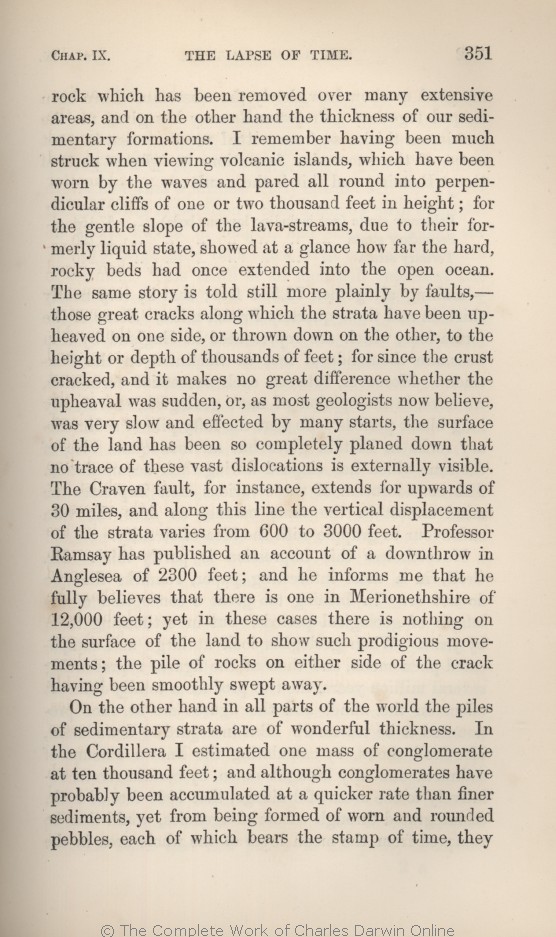rock which
has
been removed over many extensive areas, and on the other hand the thickness of our sedimentary formations. I remember having been much struck when viewing volcanic islands, which have been worn by the waves and pared all round into perpendicular cliffs of one or two thousand feet in height; for the gentle slope of the lava-streams, due to their formerly liquid state, showed at a glance how far the hard, rocky beds had once extended into the open ocean. The same story is told still more plainly by faults,—those great cracks along which the strata have been
up-heaved | up-heaved 1869 | | upheaved 1872 |
| 1 blocks not present in 1869 1872; present in 1859 1860 1861 1866 | | He who most closely studies the action of the sea on our shores, will, I believe, be most deeply impressed with the slowness with which rocky coasts are worn away.
|
|
On the other
hand
in all parts of the world the piles of sedimentary strata are of wonderful thickness. In the Cordillera I estimated one
mass | mass 1869 | | pile 1860 1861 1866 |
| conglomerate 1860 1866 1869 | | con- glomerate 1861 |
| feet; 1869 | | feet 1860 1861 1866 |
| ..... 1869 | | in 1860 1861 1866 |
| ..... 1869 | | thickness. 1860 1861 1866 |
|









